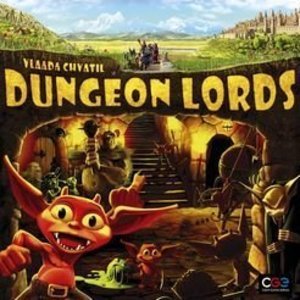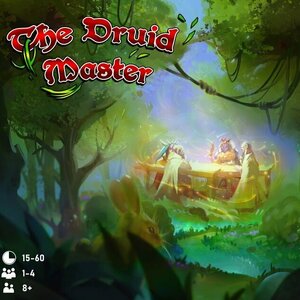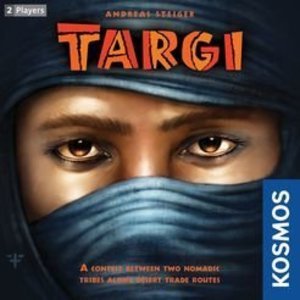Purple Phoenix Games (2266 KP) rated Custom Heroes in Tabletop Games
Feb 7, 2022
Custom Heroes is a fantasy/sci-fi-themed, customization, ladder-climbing, trick-taking card game for two to six players. In it players are using their hand of cards to win tricks (a la Tichu). The twist is that each card is able to be upgraded by using various Advancements that are added directly into the same sleeve as the base card. The winner of the game is they who amass 10 or more points and win a subsequent hand.
Before the first game after unboxing, all Character Cards will need to be sleeved. These Character Cards are numbered from 1-10 and come in six sets (one set of 10 cards for each player, at max player count). To setup the game, each player chooses a Player Screen to hide their resources and provide the scoring table. Shuffle the Character cards and deal each player a hand of 10 cards. For this review, I will be using the two-player rules. Players also begin with 1VP Token and 2 Power Tokens, along with an Ascended Form Advancement Card and Kodora Advancement Card. In a two-player game, players begin with three total Advancement Cards, as shown in the photo below. The rest of the VP Tokens and Power Tokens are placed (or thrown, in my case) on the table, and the remainder of the Advancement Cards are shuffled and placed in the bag to be drawn randomly throughout the game. The battle for tricks may now begin!
As with all (most?) trick-taking games, Custom Heroes is played over a series of rounds. However, Custom Heroes is played across three phases: Upkeep, Main, Scoring. During the Upkeep phase, the deck of Character Cards is shuffled and 10 cards are dealt to each player. On each player’s turn during the Main phase, they will decide if they would like to upgrade any card by sleeving Advancement Cards along with the Character Cards. These Advancement Cards are clear plastic and will alter the value of the card, provide special abilities, or provide modifiers to the card’s value. Sleeving new Advancements may be done at any time during the turn, before playing it, but the caveat is that ALL cards are shuffled and dealt to players after every round, so the chances of receiving that same card in future hands diminishes with each additional player at the table!
Once Advancements have been applied, or whilst applying, the players will determine the lead play. A lead could be a single card or several matching cards in a set. The following player will need to play a card, or cards, of the same number, but of higher value. For example, if a single 7 was led, only a single 8, 9, or 10 will beat it. However, if a pair of 5s was led, a pair of 6-10 will beat that lead. Players may pass if they cannot, or choose not to, beat the current trick, and can engage in play on a future trick. Once a player has run out of cards for the hand, or all players have passed. The first player to run out of cards, or the last player to play a card, wins the hand and receives the benefits listed on the scoring table shown below. Again, when a player earns 10 VP and wins a hand, they win!
A few notes about Advancement Cards. The Ascended Form card given to all players at setup will allow the player to win the trick for that round once played. It is essentially a wild insta-win card. That is, unless another player plays an Ascended Form on top of it and wins with the most recent Ascended Form. The Kodora card, however, can be played to the player’s tableau instead of as a card in a trick. When played this way, the player “bets” two VP Tokens that they will win the hand. If they do, they gain an additional two VP Tokens, but lose their bet if they do not finish in 1st Place. All other Advancement Cards may be added to the Character Card sleeve as long as the associated gem icon at the bottom is not already present in the sleeve. As there are four gem slots on Character Cards, each Character may be upgraded four total times.
Components. This one comes with a number of components of different types. The tokens are all small, but not too small, the bag is cool, but obviously the main attractions are the clear plastic cards and sleeves common to the Card Crafting System that AEG produced. I think I first saw this idea of layering plastic cards on top of one another in the Gloom series, though it may have existed even before that. I adore this idea and really fell in love with it when I was big into Mystic Vale, also from John D. Clair and AEG. So components for me get a big ol’ seal of approval. I love ’em.
Similarly, I think the gameplay gets a big seal of approval from me. Like I said, I was big into Mystic Vale for a while, but I think that Cusom Heroes, to me, trumps it in many ways. Though both boxes mention games approximately taking around 45 minutes, I found Mystic Vale to be much longer, mostly due to having to explain and re-explain rules and oddities to players at the table. It feels like Custom Heroes has cut down the complexity of gameplay, especially for newer gamers. I can bring out Custom Heroes and have it taught and played in under an hour – a feat I still haven’t mastered with Mystic Vale.
I think that I also prefer the trick-taking style of Custom Heroes a bit more. My family really enjoys playing Euchre at family reunions and other events, and while Custom Heroes isn’t a Euchre clone at all, the feel is very similar. There is still a led card, and cards that are more valuable to be played atop them in order to win tricks. While there isn’t necessarily any suits in Custom Heroes, the ability to trump an entire hand with an Ascended Form Advancement or other Advancements adds a layer (see what I did there) of strategy and tactics that is just so satisfying. I am a big fan of games that allow players to upgrade their starting resources, or level up their characters, and this one fits right inside a little 60 minute pocket and is relatively easy to teach and play.
All in all, I am so glad I found this one at my FLGS (well, not super local), and there was a big sale going on. I picked it up solely for the Card Crafting System logo and it was a big hit for me. This will completely replace Mystic Vale for me in my collection, and I couldn’t be happier with that. If you are looking for something quick, easy, but full of choices and modifications, this is certainly the game for you. It’s the game for me, and that’s why Purple Phoenix Games gives Custom Heroes a mostly-upgraded 5 / 6. Could this reach into my Top 10 someday, or earn a Golden Feather Award? It is entirely possible. We shall see with more and more plays. I am excited to give it many more plays and find out! Are you in?

Raziel Dungeon Arena
Games and Stickers
App
What's Raziel? Raziel is a dark, apocalyptic style ARPG filled with baddies, bosses, and loads of...
Peter Shephard (2822 KP) rated Dungeon Lords in Tabletop Games
Sep 19, 2019
It then went back in the cupboard.
At the weekend, I managed to convince my wife to give it a try - eventually, she relented. She doesnt like playing a game where at least one player doesnt KNOW the rules.
The first game, we stumbled through, easy enough, but some "creativity" with the rules (as found) meant it wasnt exactly as per the rulebook. She enjoyed it enough to ask to play it again.
Last night, we played it again. And, having muddled through the first game it was a totally different game. It was entertaining, it was creative, the rules felt like they flowed much better. With two players (and 2 "NPCs") it's a challenge but probably not infinitely replayable. Next challenge will be to use the full rules - the rules are set up as "combat examples", "basic play", then "normal play" with a bit more variation and a bit tougher.
There are lots of nice nods to other classic dungeon crawl genres and games, and the boards are clear enough for easy play.
There are LOTS of tokens and cards, so I would recommend investing in some sort of in-box storage system - I spent about £2 on the one i use, which I think is supposed to be for screws and nails!
It's a really fun game, and I am now looking at the expansion for a near-future purchase!
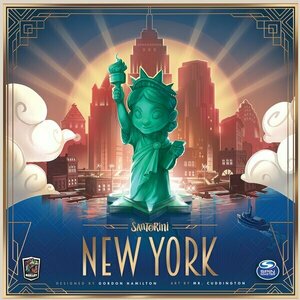
Santorini New York
Tabletop Game
Santorini New York puts players in the work boots of builders constructing a grand city at the start...
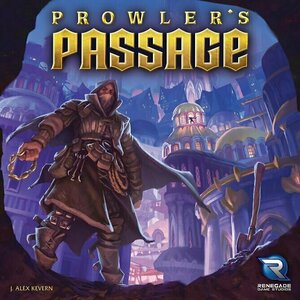
Prowler's Passage
Tabletop Game
In the heart of the sleeping city, there lies incredible wealth. The city gates are well guarded,...

METAL SLUG X
Games and Entertainment
App
The masterpiece of 2D action-shooting, "METAL SLUG X", lands on iPhone/iPod touch! Foil General...

Rugby League Live 2: Quick Match
Games and Sports
App
GET YOUR QUICK FIX OF RUGBY LEAGUE! The ultimate iPhone & iPad rugby league experience! Tru Blu...
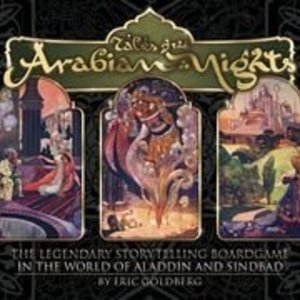
Tales of the Arabian Nights
Tabletop Game
In tales of the Arabian Nights, you are the hero or heroine in a story of adventure and wonder just...
board game storytelling questing
Purple Phoenix Games (2266 KP) rated The Druid Master in Tabletop Games
Jun 2, 2021
Disclaimer: We were provided a PnP of The Druid Master for the purposes of this preview. The artwork and design of the cards is not yet finalized, so what you see pictured below is not necessarily what the production copies will look like. It is also important to note that although the game is about natural medicines/remedies, it does not replace professional medical advice and treatments. -L
In The Druid Master, players will take on the roles of (you guessed it) Druids who have mastered the ancient arts of healing, through use of plants, herbs, and other natural elements. Ailing patients will come to you (and your rivals) for help, so you must work quickly to concoct the most effective remedy to heal them back to normal! To setup for a game, each player receives a Player Screen, 1 Effect card, and 7 Plant cards. The remaining Effect and Plant cards are shuffled to form draw decks, and the Event deck is placed nearby as well. Place the deck of Patient cards facedown within reach of all players, and set the Cure tokens to the side. The game is now ready to begin!
Over the course of 8 rounds, players will be using Plant and Effect cards to best help the ailing Patient for each given round. Once the 8th and final Patient card has been resolved, points will be counted to determine the ultimate Druid Master! To start a round, an Event card will be revealed. These Events will alter the round in some way, putting your strategic thinking to the test. For example, an Event card might limit the number of cards you can play this round. After the Event is resolved, the Patient card will be revealed for all players to see. The Patient will have a list of symptoms/ailments, with a percentage corresponding to the severity of the issue. Each player will then secretly select 1-3 Plant cards from their hand to be used to heal the Patient. The different Plant cards offer remedies for the various symptoms/ailments, and also list a corresponding percentage as to how much it will help. Effect cards can also be used during this phase of the game to obtain bonuses/negatively affect opponents. Use them wisely!
Once everyone is ready, all Plant cards will be revealed, and players will determine who has best cured the Patient. Compare the percentages on your Plant cards against those of the Patient – if you have failed to completely cure a symptom, take a Cure token that represents the missing percentages from your played cure. When all Plant cards have been checked, the player that was able to Cure the Patient completely (was able to match all Patient percentages with their played Plant cards) is the winner of the round. They will take the Patient card for end-game scoring. If nobody completely Cured the Patient, the player who accumulated the least number of Cure tokens (thus curing the most Patient percentages of the group) wins the round and collects the Patient card. All Plant and Effect cards used this round are discarded, and each player will draw 2 new Plant cards for the next round. Play continues in this fashion until the 8th Patient has been Cured. Players will count up their points earned from Cured Patients, and the player with the highest score is named the winning Druid Master!
I should say right off the bat that I’m not really a person who is into natural medicine. But my personal preferences do not stop me from playing and enjoying The Druid Master. If you think about it, natural medicine is very thematically appropriate for fantasy worlds, so it makes sense in this setting. Ok, so what about the gameplay? It is very straight-forward, which lends itself to fast teaching, learning, and playing. Ultimately, you are trying to match your Plant cards as best you can to the Patient card in play. And since you can only play a maximum of 3 cards each round, you really have to consider your options. If you aren’t able to completely Cure the Patient, can you play your Plant cards in such a way that you will collect the fewest Cure tokens? It’s all about how you strategize. Another thing that I really like about the gameplay is that all Plant cards are selected secretly and revealed simultaneously. So nobody is at an advantage by being able to see that an opponent was not 100% successful. It adds a little element of risk and hidden information to the game that makes it more engaging.
As I mentioned earlier, this is a PnP version of the game, so these components are not what will be received in a production copy. Also, the card layouts and artwork are not completely finalized either. But going on what I have, I do like the simplicity of the components. The symbolism is clear, the percentages are easy to read, and the text/pictures are informational as well. Once this game is printed on real cards and with cardboard tokens, I know it will be a decent quality production.
So overall, how does The Druid Master fare? I’d say fairly well. The rules and gameplay are straight-forward, it is fast and easy to teach and play, and it keeps all players engaged throughout the entire game. This is certainly not the most complicated or heavy game in existence, but it does offer hints of strategy that will keep the gameplay fresh and players invested. If you are looking for a nice little filler-type game set in a fantasy realm, I would recommend checking out The Druid Master. It is coming to Kickstarter soon, so be on the lookout!
Red Otter (340 KP) rated Targi in Tabletop Games
Jun 6, 2019
The game is played with a with an ever changing 5x5 grid of goods and tribe cards, with a outer ring of cards that can almost ways been selected. A robber goes around blocks off some of the outer rings of cards and serves as a timer for the game. The worker placement portion is interesting, 3 workers are placed on the outside ring, and the intersections they create between themselves are where you ace your next two.
Targi is a relatively simple game with depth. It requires outthinking your opponent as it is relatively easy to deny the other player what they want, but not necessarily get what you need at the same time. The balance comes from trying to acquire points while at the same time getting the resources to buy those cards in the first placrz especially with the heavy emphasis on points from set collections. A great game for couples

